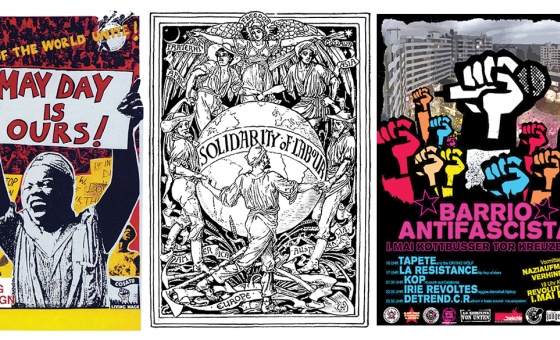This is the last article you can read this month
You can read more article this month
You can read more articles this month
Sorry your limit is up for this month
Reset on:
Please help support the Morning Star by subscribing here
JOHANN Sebastian Bach is hard to forget on torture. He treats it rarely in his vocal works, but when he does, no composer matches his uncanny ability to evoke torture’s harrowing extortion of truth and lies, the shattering recriminations it visits on both the tortured and the torturer. This is not music of the lash and the rack, but of mental terror.
Many interpreters of Bach’s cantatas and their libretti might claim that references to torture in these works are merely metaphorical, convenient literary weapons used to make religious arguments about morality and salvation. But then as now, torture was an omnipresent, much-debated practice, thought to be a crucial means not so much of establishing guilt but of confirming it.
When Bach’s music referred to torture it was not an abstract, merely figurative, turn of phrase, but summoned thoughts of horrific punishments potentially to be visited on anyone accused.
Within two months of taking up his position as director of music in Leipzig in 1723, one of the most prestigious civic musical positions in Germany, Bach led a performance of his cantata, Herr, gehe nicht ins Gericht mit deinem Knecht / Lord, do not go into court with your servant – BWV 105.
Paraphrasing the second verse of Psalm 143, the text of Bach’s opening chorus assumes that in the godly courts all are guilty of heinous crimes. The orchestral introduction is simultaneously tenuous and inexorable, resisting judgement but realising that there is no escape from its dark decrees.
A series of doubting harmonies moves forward because there is no going back, the melody concluding with a series of sighing supplications just before the chorus enters with full, even oppressive, force. In spite of these pleas not to be brought into court, the chorus realises it must face judgement. Once the choir enters, it too trudges ahead like judges in solemn procession.
In setting the second line of the chorus “before You no living person is just,” Bach suddenly animates the texture with a frantic fugue, one that brilliantly conveys the turbulent, ephemeral rush of earthly life and sin, the perpetual conflicts with the self and others. Like life, the chorus careens to a preemptory end that ushers the individual, heard in the subsequent alto recitative, before God. Here no torture is necessary to elicit the truth. God is a “just judge,” and the individual’s admission of guilt is complete and untroubled: “I state my confession freely to you / and do not throw myself into danger / by denying, by concealing / the errors of my soul.”
The central aria follows immediately with high throbbing strings. There is no real bass line, no foundation to the sound. The shimmering major harmony hovers like mist, or, as it turns out, deadly gas. Then a plaintive oboe soars into and above these yearning, trembling harmonies. The music seems to offer comfort, in spite of the dark minor tinges at the end of the oboe’s rapturous phrase that concludes its introductory solo.
The voice that emerges is also high, ethereal: the soprano describes “How the sinner’s thoughts tremble and waver / while they bring accusations against each other / and on the other hand dare to make excuses for themselves.” Bach unspools long arcs of striving melody on the words “accusation” and “dare” that bring to mind the tensions of legal wrangling and internal rationalisation.
What makes this music so unsettling is the mysterious way that Bach imbues this atmosphere of recrimination with a distantly glowing aura of solace. For the sinner, the earthly courts of justice and opinion and the internal arguments one makes with the judge that is one’s own conscience promise distant hope.
But this hope cannot be sustained, as is already clear before the final line of the aria turns to the evil-doer’s “troubled conscience torn apart by its own torture.” In contrast to the long melismas heard over the first lines of the aria, Bach treats the word “torture” and the violent verb “to tear apart” [zerrissen] with grimly controlled emphasis. Only at the last repetition of “torture” does he have the soprano emit a high, anguished note over the central vowel, like a long cry of pain. The cadence comes as a kind of relief, like the deliverance from pain that the torturer plays on when he at last allows the victim a gasp of air after near-death immersion, or releases the pressure on the thumbs.
After the voice falls silent, relieved of its anguish, the long introductory music returns in full, leaving listeners to contemplate the psychological implications of this aria. Finally, the music evaporates in a cloud of doubt with the vain hope of earthly validation still hanging in the air.
More than merely a figurative turn, the torture this music portrays attains its troubling and violent impact more through its calm serenity than its occasionally sharp inflections and its decisive turns of the crank. This is a torture conducted in the isolated chamber of the mind.
America, they’re playing your song, one cataloged with bureaucratic precision and the official stamp of juridical truth: JS Bach cantata BWV 105.
This is an abridged version of an article that appeared in counterpunch.org. David Yearsley is a long-time contributor to CounterPunch and the Anderson Valley Advertiser. His latest book is Sex, Death, and Minuets: Anna Magdalena Bach and Her Musical Notebooks. He can be reached at [email protected]











